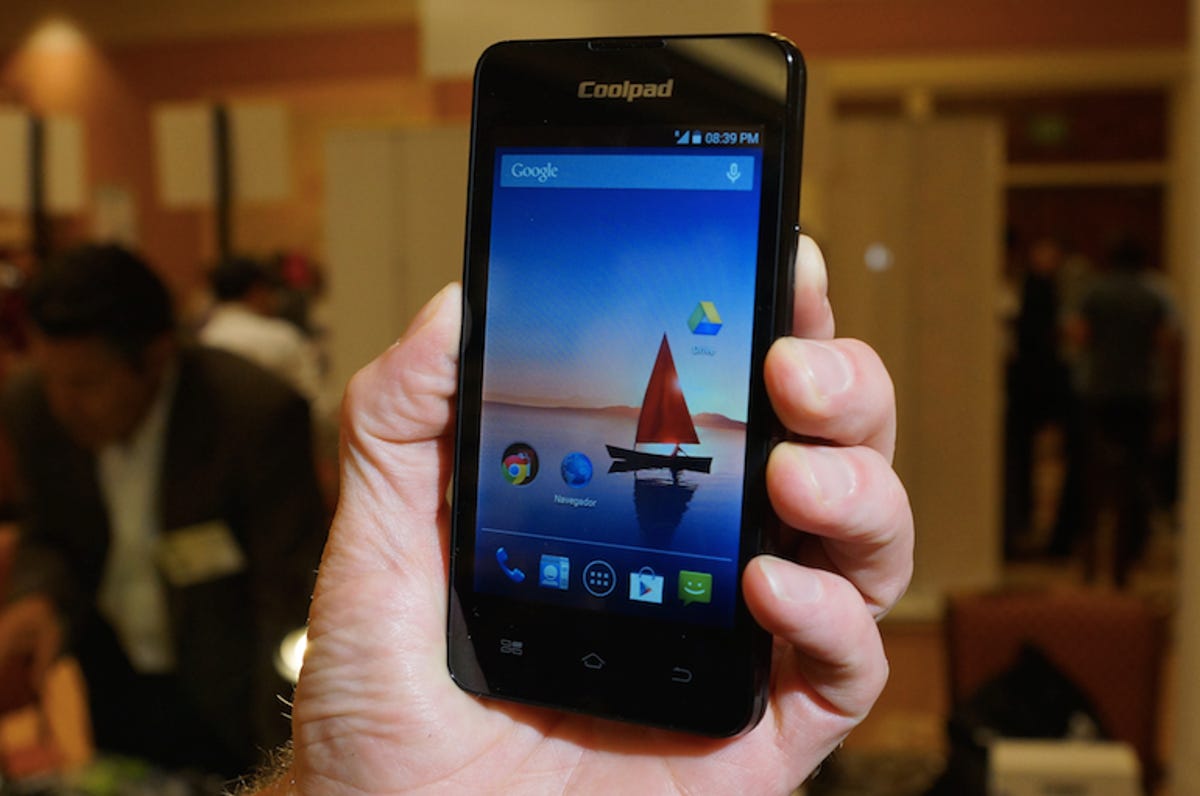
CNET
Scratch Wireless is introducing a $99 smartphone that can be used with the company’s free wireless service, setting a new bar when it comes to cheap mobile options.
On Tuesday, the company introduced the CoolPad Arise, a Chinese-manufactured smartphone that runs Google’s Android mobile operating system and operates on Scratch’s “Wi-Fi first” wireless service. The inexpensive phone can be used for free on Scratch’s no-contract Wi-Fi service — or as a piggyback on Sprint’s network when no Wi-Fi is available. This combination makes it one of the cheapest options on the market.
Scratch has introduced this new low-cost device at time when consumers are looking for cheaper alternatives to more expensive services from large wireless operators like AT&T, Verizon, Sprint or T-Mobile. While these larger carrier customers are expected to pay $50 or more a month for service plus the full cost of a $600 smartphone, Scratch offers service and a new smartphone for a fraction of that price.
The free Wi-Fi service and new handset are designed for the most cost-conscious of wireless subscribers, said Jon Finegold, vice president of marketing at Scratch Wireless.
“Parents can buy it for their kids or kids can buy it for themselves when they graduate from college and are kicked off the family plan,” he said. “And with a $99 phone, it’s really a no-brainer. You can even buy one as a spare phone and toss it in your backpack.”
Boston-based Scratch Wireless is among a handful of companies, including Google and Republic Wireless, that have built a low-cost mobile service by using a combination of free Wi-Fi networks and leased service from traditional carriers to provide consumers with inexpensive wireless. Google and Republic charge for using their Wi-Fi. Scratch, by contrast, hopes to stand out with its free Wi-Fi first.
With Scratch, customers can make phone calls, send text messages and access the Internet using Wi-Fi hotspots when they are available. When not, the service automatically switches to a traditional cellular service. In the case of Scratch, customers access Sprint’s network.
Wi-Fi first phone services are so cheap, or free in the case of Scratch Wireless, because customers spend the majority of their time on a Wi-Fi network instead of a cellular network. This means that operators, such as Scratch, don’t have to pay roaming charges to Sprint, keeping costs low. Finegold said that two-thirds of Scratch’s customers each month remain on Wi-Fi. The company makes money by selling cellular access to the other third of its customer base who want access to a cellular network either by the day or on a monthly basis.
The idea of using Wi-Fi as a primary means to provide mobile service has gotten a boost recently from Google, which last month launched its Project Fi network. Google is working with carriers Sprint and T-Mobile to offer a wireless service that will seamlessly switch between Wi-Fi hotspots and 4G LTE cellular networks.
Finegold said that having Google enter the Wi-Fi first market is validation of Scratch’s approach to the market. But he said that Google and Scratch are not going after the same customer. Google’s service works only with its Nexus 6, which costs more than $600 at full retail price, and Google is charging customers $20 a month just to access its Wi-Fi only service. Customers must pay even more to get access to cellular data service from either T-Mobile or Sprint.
“Google is trying to push the market,” he said. “But it’s not in their DNA to compete for the value customer. And that’s where we are focused.”
Scratch, which first launched its service in October 2013, has also differentiated itself from competitor Republic Wireless — which charges a minimum of $5 a month for unlimited voice calling, text messaging and Internet access on a Wi-Fi network — by not requiring customers to sign up for monthly service.
Instead, Scratch offers its customers access to unlimited calling, texting and data while on Wi-Fi for free. If customers want backup connectivity from Sprint when they’re out of Wi-fi range, they can pay for daily $1.99 voice and data passes or subscribe to monthly unlimited voice service for $15 and 1GB of data for $25.
Since its launch 18 months ago, Scratch has only offered one smartphone: Motorola’s Photon Q for $269. The introduction of the $99 CoolPad offers customers a less expensive option. This is significant because Republic Wireless has already been offering Motorola’s Moto G for $149.
Understandably at such a low price tag, the $99 CoolPad does not include all the bells and whistles found on more expensive flagship devices like Apple’s iPhone or Samsung’s Galaxy smartphones. For one, it does not offer 4G LTE connectivity. This means that when customers access Sprint’s network, the CoolPad will only connect at 3G data speeds.
In addition, CNET Reviews editor Jessica Dolcourt said in September that the “specs for the chunky phone are basic, and the rough construction quality makes it seem like it’s been stamped out from a sheet of black plastic.” Still, she said the 4-inch screen and 2-megapixel rear-facing camera make it a good starter smartphone.
Scratch is expected to add more phones to its lineup later this year. The company is also working on a solution that will allow its service to work on any Android device without altering the operating system. The company also announced Tuesday that anyone can sign up for its service. Since it launched in 2013, the company had restricted access to the service by making it invitation only.



